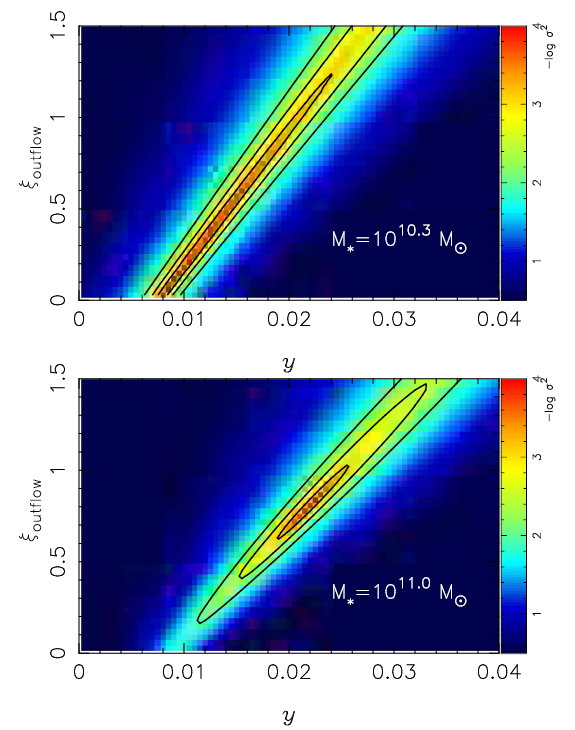Galaxies with stellar masses similar to our Milky Way (M*-galaxies) are quite typical and dominate the stellar mass budget of the local Universe. Although their structure and star formation evolution have been extensively studied in the past decade, the investigation of gas flow history of M*-galaxies is still lacking. Combing the star formation-stellar mass and gas fraction-stellar mass relations of galaxies from observations, Dr.PAN Zhizheng Pan from the Purple Mountain Observatory and his collaborators used an indirect method to derive the evolution of gas inflow and outflow rate of local M*-star forming galaxies since z=1.3. They found that the inflow rate in the M*-progenitor galaxies significantly exceeds the star formation rate at high redshifts. At late epochs, the inflow rate decreases to a level similar to the star formation since z=0.5. They also found that the average outflow rate of these galaxies is around (0.5-0.8)×star formation rate. 
By Pan Zhizheng Fig.  map against y and ξoutflow. It is clear that the lowest map against y and ξoutflow. It is clear that the lowest  , i.e., the best matches between model predictions and observations, is found at ξoutflow ~ 0.5–0.8 and y ~ 0.015–0.02. , i.e., the best matches between model predictions and observations, is found at ξoutflow ~ 0.5–0.8 and y ~ 0.015–0.02. Similar to Figure 5 but for SFGs with log (M* M☉) = 10.3 and log (M* M☉) = 11.0. This work has been published in ApJ. For more details see the link: https://iopscience.iop.org/article/10.3847/1538-4357/ab11c2/pdf |
